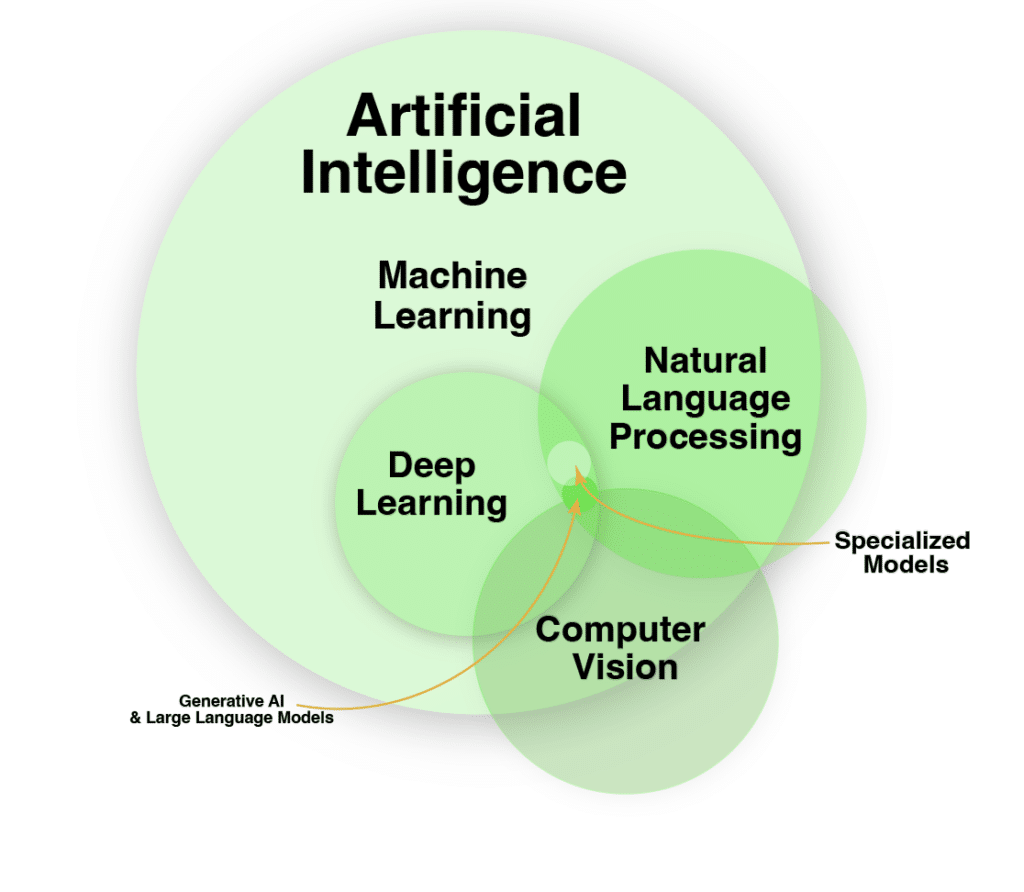17/04/2024
Artificial intelligence (AI) has become a non-negotiable business tool in recent years. Not all AI is created equal, and as adoption becomes more widespread, businesses who use AI are increasingly looking to sharpen their competitive edge—and they’re turning to specialised models to do this.
Specialised machine learning models are tailored to specific business needs and customer preferences to a level of customisation that generic AI solutions cannot match. Where generic AI models are versatile, they are limited in their potential applications and may need to be optimised for a specific task or domain. As a result, their performance may be constrained compared to specialised models designed for a particular use case.
As companies increasingly rely on data-driven strategies and implement AI into niche workflows, the adoption of specialised AI has seen a significant uptick, with one recent projection suggesting a multibillion-dollar growth in the market over the next few years.
Hybrid AI
At the core of this surge is hybrid AI, which blends traditional rule-based systems and modern machine learning techniques. This can be traced back to the early days of artificial intelligence research, where the limitations of purely symbolic or statistical approaches became evident.
By combining the explainability and determinism of rule-based systems with the predictive power and adaptability of machine learning, hybrid AI models offer the best of both worlds. Specialised models, a subset of hybrid AI, are designed with a particular domain or task in mind, enhancing performance and efficiency in specific business contexts.
While pre-trained models and generative AI have helped reduce the time to market for new applications, they often fall short when meeting unique business cases and are not the answer to every AI business case. This is why specialised AI has become the go-to for many businesses; it promises to revolutionise industries through automation and by providing tailored, intelligent solutions that are specific, adaptable, and scalable.
The different types of AI model
Foundation models
Foundation AI models are those behind generic AI systems that can be adapted to a variety of tasks which may or may not have been anticipated by the model’s developer, such as pattern recognition or powering basic process automation without human intervention. They work by applying algorithms to data inputs to achieve the tasks they’ve been programmed for.
Foundation models are sometimes called traditional models or general-purpose AI, and they all start as general prepackaged input models and can become more advanced through additional training.
Generative models
Generative AI models focus on creating new content or data based on its learning from vast datasets. In contrast, hybrid AI emphasises the integration of machine learning with domain-specific rules or logic.
This distinction is crucial for businesses that require not just data generation but also the application of complex, rule-based logic that generative AI alone might not adequately address. The utility of generative AI in business applications can also be limited by its one-size-fits-all nature, which often lacks the flexibility needed for specific business cases.
Large language models
Large language models (LLMs) come under the deep learning umbrella and are also a type of generative AI. An LLM is a statistical language model that estimates the probability of a sequence of words appearing together within a given context, which is often provided as a spoken dialogue or through written text.
Specialised models
Specialised models are designed and trained to perform a specific task or operate within a particular domain efficiently and accurately. Unlike general AI models that aim to handle a broad range of functions with varying degrees of proficiency, specialised AI models focus on a narrow set of capabilities, often tailored to the unique needs and challenges of a specific industry, application, or business, for superior performance.
Examples of specialised models include SpaCy, a popular NER tool known for its ability to handle a wide range of languages, and IBM Granite, a decoder-only foundation model for generative AI tasks ready for enterprise use.
Here’s a look at how all these different types of model come together under the AI umbrella:

Analysing the advantages, disadvantages, and in-betweens
In deciding whether to implement specialised AI models, businesses must weigh various factors, including the different advantages and disadvantages in the context of their operations.
Analysing your specific business case for specialised AI will help you to determine whether the following points apply to you. As always, working with an external expert can help you make the right decision about whether specialised models are the right fit for you.
The advantages
Specialised models are tailored to business needs
The most obvious advantage is that specialised AI is tailored to a more specific use case or business need. They offer unparalleled customisation, enabling businesses to fine-tune parameters and functionalities to align closely with their challenges. This bespoke approach ensures that the AI system can handle the nuances of a company’s operations, customer base, or product offerings, leading to more effective and efficient outcomes.
For instance, a retail company can develop an AI model to predict customer buying patterns based on their data, leading to more accurate inventory management and targeted marketing strategies. This level of customisation is not achievable with off-the-shelf AI solutions, which are often designed to cater to a broad range of applications.
Specialised models are more streamlined
Specialised AI models typically have a more streamlined and less complex architecture than their generic counterparts. This simplicity arises because the model is only required to perform well on a narrowly defined set of tasks or data, allowing for the removal of unnecessary components and layers that would be needed for a broader application scope. A simpler architecture makes the model easier to understand and maintain and reduces development and debugging time, enabling faster deployment and iteration cycles.
Specialised models are more cost-efficient
Operating specialised AI models can be significantly cheaper than their generic counterparts. Since these models are tailored to specific tasks, they require less computational power to train and run, translating into lower cloud computing and data processing costs. Additionally, the efficiency of specialised models means they can achieve desired outcomes with fewer resources, further reducing operational expenses. This cost-saving aspect is particularly beneficial for SMEs with limited budgets for AI integration.
Specialised models also have lower infrastructure costs when compared to implementing large, generic models like GPT-4. Specialised AI models are optimised for specific tasks, allowing them to run effectively on less powerful hardware or cloud-based environments.
This can significantly reduce the need for expensive, high-performance computing resources, making AI accessible to businesses of all sizes. For example, a customer service AI designed to understand and respond to queries in a specific industry can be much smaller and less resource-intensive than a model designed to cover all possible sectors.
Even though specialised models might be more expensive to introduce in the beginning due to their training requirements, these costs are outweighed by the long-term cost efficiency.
Specialised models have greater longevity
Specialised AI models provide businesses with better agility and the ability to adapt to technological advancements. When a new technology or methodology emerges, companies can more easily update or replace parts of their specialised AI systems without overhauling the entire model.
This modular approach not only ensures that the AI solution remains at the cutting edge but also extends the longevity of the model by allowing continuous improvements and adaptability to changing business environments or objectives. This flexibility is a crucial advantage in business, where staying ahead of trends can be the difference between leading the market and falling behind.
The disadvantages
Specialised models need extensive training
Specialised AI models require substantial training to achieve the desired level of accuracy and effectiveness. This process involves curating large datasets highly relevant to the specific business case or vertical the model is designed for.
Training these models can be resource-intensive, requiring not only significant computational power but also time and expertise to manage the training process effectively. This can be a barrier to fast deployment for businesses needing more in-house knowledge or access to data.
Specialised models have vertical specificity
Being dedicated to a specific vertical comes with the advantage of high specialisation but also the limitation of reduced flexibility. Specialised AI models are designed to excel in a narrow domain, meaning they may not perform well outside their intended scope.
This vertical specificity requires businesses to invest in multiple specialised models to cover different aspects of their operations, increasing complexity and costs. Tailoring each model to a specific vertical implies a longer development cycle, as each model must be individually designed, trained, and optimised.
Specialised models require programming
The development and maintenance of specialised AI models require specialised programming skills and a deep understanding of both AI technologies and the specific domain the model is intended for. This specialisation can challenge businesses without in-house AI model development expertise.
This gap can be bridged by hiring external consultants or service providers. Although this approach can add to the cost and complexity of deploying specialised AI solutions, working with the right partner that has expertise in the specialised AI space can help you overcome any knowledge or experience gaps that exist in your organisation.
The Getronics and WATsNEXT partnership, which we’ll explore in more detail, is one example of how the specialist expertise of third-party providers can be used to implement specialised models that yield strong results.
Specialised models depend heavily on data
The reliance on data from specialised AI models is a double-edged sword. On the one hand, it allows these models to provide highly tailored solutions; on the other hand, it necessitates robust data governance practices to ensure the data’s quality, privacy, and security.
The effectiveness of specialised AI models is directly tied to the availability and integrity of relevant data, making data governance a critical component of their deployment. Businesses must invest in systems and processes to manage data collection, storage, processing, and analysis, ensuring compliance with regulatory requirements and ethical standards. This adds an additional layer of complexity and cost to implementing customised AI.
The in-betweens
Specialised models take longer to implement
Setting up specialized AI systems can be a time-consuming process because it requires a detailed analysis and understanding of the specific tasks it is designed to automate. This granularity in design and implementation necessitates a deeper dive into the nuances of the process it aims to enhance, leading to longer preliminary phases.
However, the flip side of this detailed approach is that the infrastructure required to support specialized AI is often smaller and more focused than that needed for broader AI applications. This specificity can actually lead to a reduction in the time and resources required for delivery and implementation once the initial setup is complete.
Partnering with a vendor who has extensive experience in deploying specialized AI can significantly accelerate this process by leveraging their knowledge and experience to streamline the setup process.
Specialised models might not always work
Generalised AI models offer a broad application base but can fall short when it comes to meeting the unique needs of individual organizations. If a generalised model proves inadequate, modifying it to suit specific requirements is not always feasible, often necessitating starting over from scratch.
This is where specialized AI models stand out; they are inherently designed to be customized and adapted to the specific needs of a company. This adaptability is a double-edged sword, however. While it allows for the AI to be finely tuned to a company’s current needs, ensuring a high degree of relevance and effectiveness, it also means that the company must be prepared to continuously update and adjust the AI system to keep pace with both internal changes and the rapid development of AI itself.
This ongoing need for adaptation can require a significant investment in time and resources but also offers the opportunity for the AI system to remain at the cutting edge of technology, providing a competitive advantage and ensuring that the company’s investments in AI continue to deliver tangible benefits.
Is specialised AI the right fit? It depends on context
A particularly interesting example of specialised AI in action is a recent market intelligence project by German energy company ABO Wind, which develops renewable energy sources.
With the objective of doubling wind capacity by 2028, ABO needed better monitoring of wind and photovoltaic project opportunities, but this was becoming complex and time-consuming due to the contracts auction system in France and a large amount of competition with energy giants.
To achieve better market intelligence, ABO Wind partnered with WATsNEXT—an IBM Business Partner—whose solution includes IBM Watson Discovery and IBM Watson Knowledge Studio software to capture competitive insights.
This automates the collection of all documents from institutional websites, streamlining the data extraction, structuring, and presentation process. The system is designed to aggregate and organise information efficiently, presenting it through a user-friendly interface that simplifies access and analysis. The implementation of WATsNEXT’s AI solution also offers ABO Wind a significant competitive edge by enabling unique responsiveness and providing a comprehensive overview of the market.
Advanced artificial intelligence techniques are at the core of this system’s effectiveness. Specifically, the solution employs two distinct Named Entity Recognition (NER) models to extract critical data from documents accurately. One model is dedicated to extracting data from text chapters, while the other is specialised for handling data within tables.
Despite being trained on just a few dozen documents, the specialised models achieve a high level of efficiency, which negates the need for LLMs, relying instead on two pre-trained Transformer models without the need for GPU resources during inference. Since implementing the solution, ABO Wind has improved efficiency by 80%, eliminating tasks such as exploring and extracting data manually.
How you can get started
The first step in any IA project is to identify which of your processes actually need to be automated. Which of your processes are recurring and take up a lot of time and manpower? These are the ones that are ripe for automating, as are those that are repetitive, time-consuming, and require significant human effort but are relatively routine in nature.
Following the identification of suitable processes for automation, the next step is to determine the most appropriate AI model to automate it. This decision-making process is nuanced and requires careful consideration of several key factors:
- Data volume: The amount of data available and required for the process significantly influences the choice of AI model. For instance, processes with a low volume of data might not justify the expense of training a highly specialized model due to cost-efficiency considerations.
- Data hosting and accessibility: Decisions on where the data should be hosted and how accessible it needs to be are also important. The organisation of the data and the platform’s compatibility with the company’s existing systems play a crucial role in selecting an AI model. Some models might require data to be hosted on specific platforms or in certain formats for optimal performance.
- Security and regulation compliance: Security and regulatory requirements can significantly narrow down the options. For instance, if data is highly sensitive, models that offer enhanced security features or those that can be deployed on-premises rather than SaaS solutions might be preferred to comply with regulations and protect data integrity.
Getronics works with trusted partners to deliver specialised AI
As we mentioned earlier, working with the right third-party provider can help you determine whether specialise models are the right fit for your business. It can also be the difference between a successful vs. an unsuccessful specialised AI deployment.
When you work with a third-party provider, it’s important that they have the skills and expertise needed to pilot your AI project from initial idea through to completion. That’s where the Getronics and WATsNEXT partnership comes in.
Getronics has recently partnered with WATsNEXT to deliver robust, specialised AI solutions to customers who don’t have the resources to build their models.
Our partnership means businesses can work with us to achieve solutions that fit a wide range of business cases to unlock the advantages we discussed earlier while limiting the disadvantages.
Remember, you don’t need to use market-leading solutions or overly complicated AI-supported models to achieve your commercial objectives; you just need to right-size your AI model to your business case. That’s what the Getronics-WATsNEXT partnership is all about.
If you would like to find out more, get in touch with one of our experts.
About Getronics
Getronics positions itself as a global powerhouse in technology solutions, boasting a formidable team of over 4,000 professionals stationed in 22 centres worldwide. This extensive network enables Getronics to deliver comprehensive end-to-end services globally, ensuring clients can access the support and solutions they need, regardless of location.
About WATsNEXT
WATsNEXT specialises in AI and business process automation, offering bespoke solutions that leverage the best open-source and IBM technologies. With a focus on practicality and efficiency, WATsNEXT adopts a pragmatic approach, executing projects within short timeframes.





